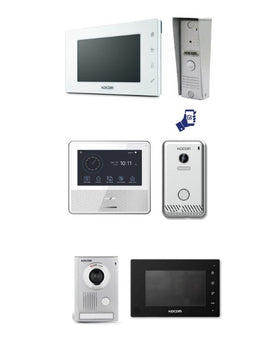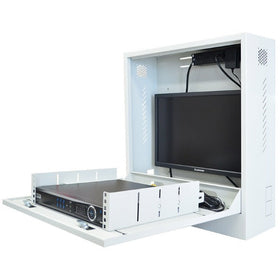
How to Maintain and Test Your Security Alarm System: Practical Tips for Optimal Performance
Your security alarm system plays a crucial role in protecting your property, deterring potential threats, and ensuring peace of mind.
Like any technology, however, it needs regular maintenance and testing to function effectively. Neglecting routine upkeep can lead to faults, reduced efficiency, and even false alarms, which can compromise your safety when you need it most.
Here’s a practical guide to help you maintain and test your security alarm system, keeping it in top shape.

1. Perform Regular Visual Inspections
Take a few minutes each month to inspect your system. Check the control panel, sensors, wiring, and any exposed components for visible wear or damage, which can impact performance. Look for signs of corrosion, loose connections, or any dust and debris that might interfere with sensors. Pay special attention to:
- Door and window sensors: Ensure they’re secure and properly aligned.
- Motion detectors: Make sure nothing is obstructing their view and that they’re positioned correctly for optimal coverage.
- CCTV cameras: If your system includes cameras, ensure they’re clean and unobstructed, with lenses free from dust and smudges.
If you notice any issues, consult your alarm provider, like CTC Communications, for advice on repairs or replacements.

2. Test the Alarm System Monthly
Regular testing is essential to confirm that your alarm system functions correctly. Most alarm systems, including those from CTC Communications like the Bosch Solution 2000 and 3000, have a built-in “test” mode, which allows you to check your system without setting off a full alarm.
Here’s how to test your alarm effectively:
- Activate the test mode: Follow your system’s manual to access test mode, which disables alarm sounds while allowing you to check sensors and functionality.
- Check each sensor: Walk through your property to trigger each sensor, ensuring they all activate as expected. Motion detectors, door/window sensors, and any other add-ons should respond without delay.
- Test the siren and strobe lights: Ensure that your siren and any visual alert devices are loud and clearly visible, as they’re key to drawing attention in emergencies.
- Review monitoring alerts: If you use a monitoring service, confirm that they receive the alerts. Contact CTC Communications if you have any concerns about monitoring accuracy.
3. Keep Batteries Fresh
Most security alarm systems are equipped with a backup battery, which kicks in during power outages to keep your system running. To ensure continuous protection, it’s essential to check your batteries at least twice a year.
Here’s how to maintain your system’s power supply:
- Backup batteries: Your main control panel will usually indicate when the backup battery is low. Replace it as needed, as a weak battery can reduce system effectiveness during an outage.
- Sensor batteries: Some wireless systems use batteries in door/window sensors and motion detectors. Change these annually or when notified by the control panel, to prevent false alarms or sensor failure.
4. Update Your System Software
Security technology is continually evolving, and regular software updates improve performance, enhance security, and patch potential vulnerabilities. If your alarm system is connected to the internet, check with your provider for firmware updates or software upgrades.
CTC Communications regularly updates their products and may offer software upgrades remotely. Check your manual or contact our support team for guidance on updating your system.
5. Clean Your Security Equipment
Dust, dirt, and debris can impact your system’s performance, especially for motion sensors and CCTV cameras. Cleaning your equipment regularly ensures clear visibility and accuracy.
- CCTV Cameras: Gently clean lenses with a microfiber cloth to avoid scratching, ensuring clear, crisp footage. Keep surrounding areas free from cobwebs or anything that might obstruct the camera.
- Sensors: Dust off motion detectors and any door/window sensors, as excessive dirt can hinder detection capabilities.
- Control Panels and Keypads: Use a soft, dry cloth to keep control panels clean and free from dust, which can impact touch responsiveness and visibility.

6. Schedule a Professional Maintenance Check
While DIY maintenance goes a long way, it’s wise to arrange a professional check-up annually. CTC Communications offers comprehensive maintenance services, inspecting and testing each component, updating software, and calibrating sensors to ensure everything is running perfectly.
Professional maintenance is especially important for systems that include complex features like pet-friendly motion detectors, which may need more precise calibration to avoid false alarms.
7. Review and Update Security Codes and Access Permissions
If you’ve had new household members, tenants, or employees, it’s essential to update the access codes and review permissions. Consider:
- Changing access codes regularly, especially if someone with access has left or if your property has had recent renovations.
- Restricting access to certain areas for certain users, if your system allows for customised permissions. CTC’s advanced systems, like Bosch Solution 3000, Bosch Solution 6000, offer flexible user codes to suit your needs.
8. Update Emergency Contacts and Monitoring Service Information
Your monitoring service relies on accurate contact details to notify you in case of an alarm. Periodically check that all emergency contacts are up-to-date in your system. If your monitoring service details change or if you need to update emergency contacts, contact CTC Communications for assistance.
9. Keep a Log of Maintenance and Testing Activities
Recording the dates of your maintenance and testing activities helps you keep track of your efforts and identify patterns over time. This is especially useful when consulting with professionals, as they’ll have insight into your system’s maintenance history.
Final Thoughts
Maintaining and testing your security alarm system doesn’t need to be complicated, and a few regular checks can go a long way toward keeping your property safe. By taking the time to inspect, test, and clean your system and by scheduling professional check-ups, you’ll ensure that your security setup provides reliable, responsive protection whenever you need it.
Need help or more detailed advice on testing and maintaining your security system? CTC Communications is here to assist.
Contact us today to learn more about our security products, maintenance services, and tips for protecting your home or business effectively.



